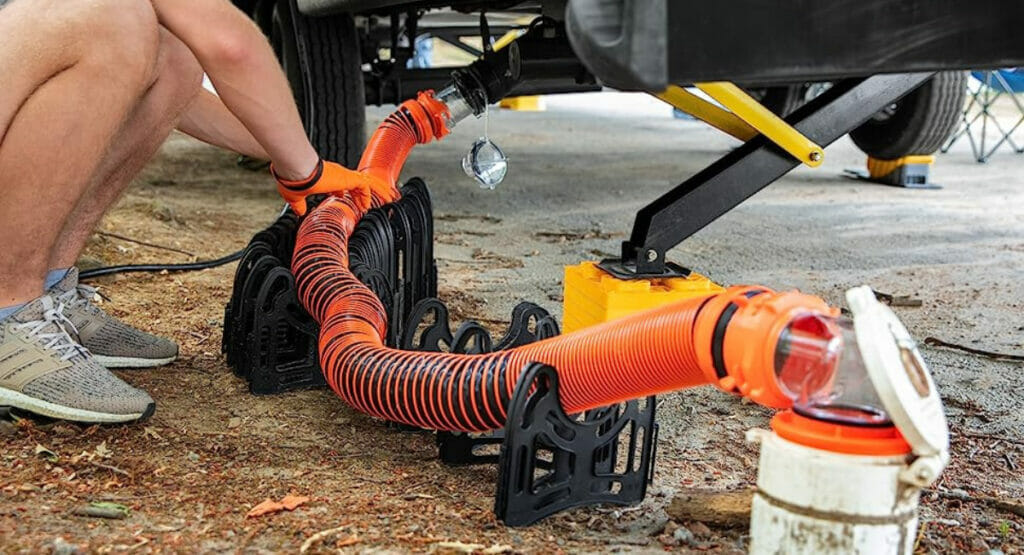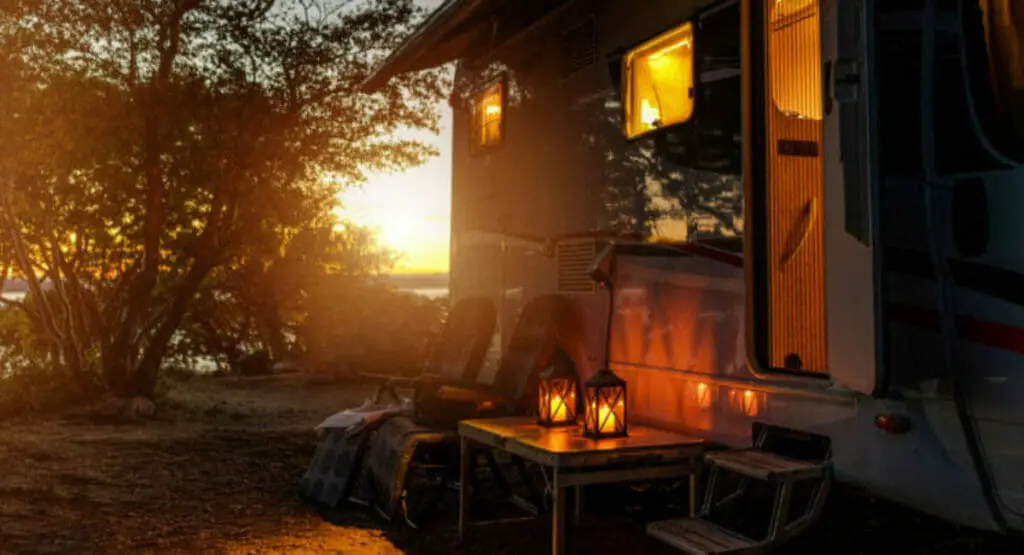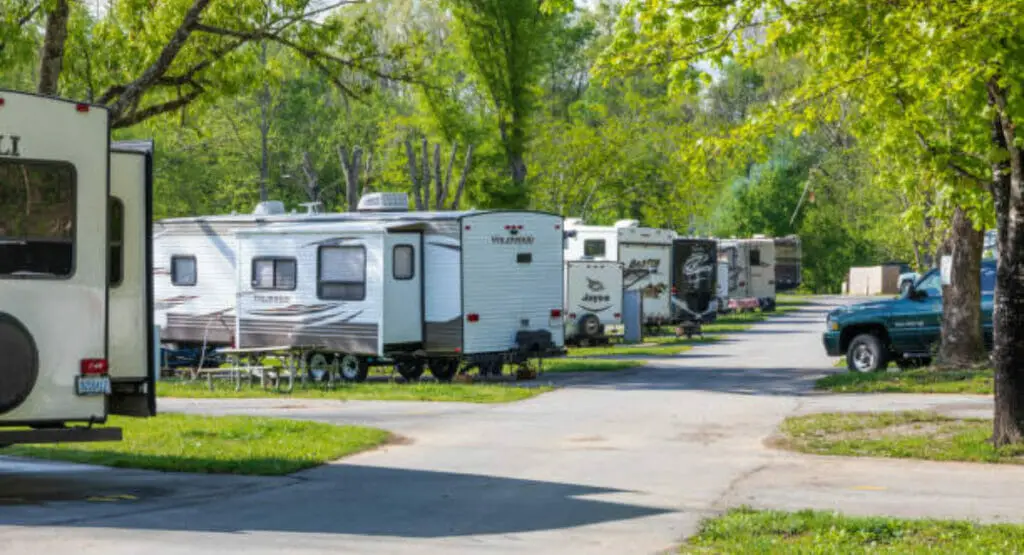Rv Sewer Hose is a specialized type of hose designed specifically for connecting recreational vehicles to a sewer system. This hose is typically made of durable, weather-resistant materials such as rubber or PVC and can withstand high levels of pressure. It is important to use the right type of hose when connecting your RV to a sewer system, as different types of hoses can provide different levels of performance and protection. Rv Sewer Hose is designed with an extra layer of protection that helps keep odors, bacteria, and other contaminants out of your RV’s plumbing system. With the right type of Rv Sewer Hose, you can enjoy peace of mind knowing that your RV’s plumbing system is safe from damage and contamination.
What is an RV Sewer Hose and Why Do You Need One?
An RV sewer hose is a flexible line used to transport wastewater from an RV’s waste tank to a dump site. It is necessary for effective garbage disposal and keeping the environment clean. The hose can also move water from the tank to a storage container, making it simple to store clean water for later use. The hose is available in a variety of sizes and can be equipped with a shutoff valve. The hose may also come with a hook to make attaching it to the tank easier. Moreover, the material utilized in the hose’s construction might vary, with PVC, polyurethane, and rubber being some of the most commonly used materials. It is critical to select the appropriate type of RV sewer hose for your needs and to ensure that it is the correct size for your RV and sewer system.
The RV sewer hose’s lifetime and efficiency depend on its proper use and maintenance. When attaching the hose, make sure it’s firmly attached and leak-free. It is also critical to store the hose properly and clean it on a regular basis to avoid the accumulation of bacteria and other impurities. Furthermore, use caution when handling the hose to avoid kinking or twisting it, which might result.
The RV sewer pipe is an important part of any RV’s waste management system. You can guarantee that your waste disposal method is safe, and efficient, and helps keep the environment clean by selecting the right sort of hose, using it effectively, and maintaining it properly.
How to Choose the Right Size and Type of RV Sewer Hose for Your Needs
Choosing the right size and type of RV sewer hose can be a daunting task. It is important to select the right size and type of hose for your needs in order to ensure that your RV has a safe and efficient waste disposal system. There are several factors to consider when selecting an RV sewer hose, such as the length, diameter, material, and adapters. In this article, we will discuss how to choose the right size and type of RV sewer hose for your needs. We will also provide some tips on how to maintain it properly so that it lasts longer.
length of the line
It is critical to consider the length of the line when purchasing an RV sewage hose. A hose of at least 10 to 20 feet in length is required for most RVs. This will give you enough length to reach the dump station while still allowing you to manipulate the hose into the proper position. Hoses that are too short are inconvenient, and hoses that are too long are difficult to store.
hose diameter
Another significant element to consider is the hose’s diameter. A hose with a too-small diameter will not be able to handle the quantity of trash generated by your RV, while a hose with a too-large diameter would be difficult to store and maneuver. RV sewage pipes are typically 3 to 4 inches in diameter.
material
Another element to consider is the material utilized in the hose’s manufacturing. The most prevalent are PVC and rubber hoses, which are both long-lasting and weather-resistant. PVC hoses are lightweight and simple to manipulate, but rubber hoses are more robust and puncture-resistant. Polyurethane hoses are another option, although they are more costly.
adapters
Most hoses have standard adapters; however, some hoses may include extra adapters unique to your RV’s sewage system. It is critical to select a hose that is compatible with your RV’s sewer system since using the incorrect type of adaptor might lead to leaks and other issues.
Selecting the proper size and type of RV sewage line is critical for ensuring that your RV’s waste disposal system is safe, efficient, and simple to operate. You may choose the perfect hose for your needs and experience peace of mind while driving by taking into account the length, diameter, material, and adapters.
How to Properly Connect the RV Sewer Hose for Maximum Efficiency & Safety
Step 1: Connecting an RV sewage hose correctly is critical for maintaining optimal efficiency and safety while disposing of trash. To do so, take the following steps:
Step 2: Begin by identifying the sewage connection at the dump station and ensuring that it is free of debris and impediments.
Step 3: Remove the cap from your RV’s sewer outlet and tie the hose to the outlet, inspecting for leaks.
Step 4: Connect the other end of the hose to the dump station’s sewage connection, making sure it’s firmly connected and there are no leaks.
Step 5: Open the valve on your RV’s sewer system once the hose is properly attached to allow waste to flow through the hose and into the sewer connection.
Step 6: Close the valve and detach the hose from the sewer connection once the waste has been disposed of away. Make careful to keep the hose correctly, shielding it from sunshine and other environmental variables.
Step 7: You can be certain that your RV sewer line is correctly connected and that your waste disposal procedure is safe and efficient if you follow these instructions.
Essential Tips & Tricks on Maintaining Your RV Sew
Maintaining your RV sewer hose is important for ensuring that it lasts for many trips and functions properly. By following below tips and tricks, you can keep your RV sewer hose in good condition, and enjoy peace of mind knowing that your waste management system is safe and efficient. Here are some essential tips and tricks for maintaining your RV sewer hose:
Store the hose properly
Store the hose in a cool, dry place, away from direct sunlight and extreme temperatures. This will help prevent cracking and other damage to the hose.
Clean the hose regularly:
Regular cleaning of the hose can help prevent the buildup of bacteria and other contaminants, which can be harmful to your RV’s plumbing system. Clean the hose using mild detergent and warm water, and allow it to dry completely before storing it.
Replace the hose when necessary:
If the hose is showing signs of wear and tear, such as cracks or leaks, it is time to replace it. Don’t continue to use a damaged hose, as it can lead to leaks and other problems.
Avoid kinking the hose:
Kinking the hose can damage the hose and reduce its flow capacity. Be careful when handling the hose, and make sure it is not bent or twisted in any way that could cause it to kink.
Use a proper fitting:
Make sure that you are using the correct fitting for your RV’s sewer system. Using the wrong fitting can result in leaks and other problems.



